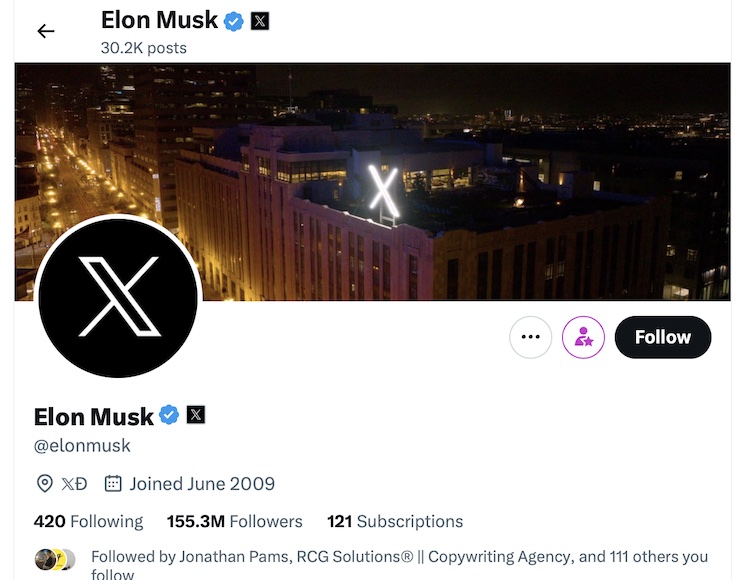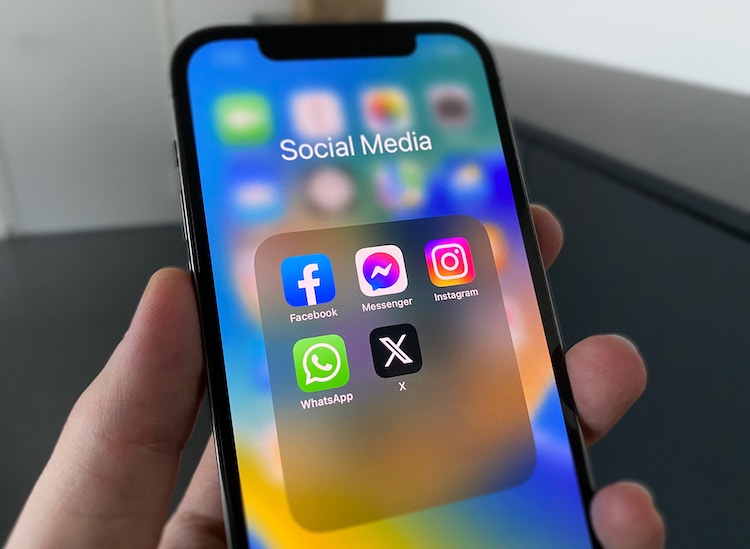
Why Twitter Remains an Important Media Relations Tool for Business
With Elon Musk now at the helm, is Twitter still a media relations tool for business? In 2022, the controversial American tech billionaire shelled out a cool $44 billion to add Twitter to his ever-expanding business portfolio, which includes the likes of Tesla, OpenAI, and Neuralink.
Wondering what a tech billionaire would want with a flailing microblogging platform? According to Musk, he’s not in it for the cash. He bought it ‘to help humanity’.
Ironically, humanity is one thing Musk hasn’t shown during his short tenure as CEO. Immediately after taking the helm, he fired four of Twitter’s top executives, dissolved the board of directors and culled 80% of the workforce.
He then gave the remaining employees an ultimatum. In a memo he said, ‘to build a breakthrough Twitter 2.0, we will need to be extremely hardcore. This will mean working long hours at high intensity. If you want to be part of the new Twitter, please click yes on the link below. Any employee who has not done so by 5pm on Thursday will receive three months’ severance’.
A prime example of internal communication ‘done wrong’ wouldn’t you say? Read how to do internal communications right.

Twitter employees weren’t the only people Musk upset. He alienated many of Twitter’s top advertisers by reinstating a number of high-profile accounts that had been banned for spreading misinformation and fuelling hate speech. Musk’s decision to relax content moderation rules led companies such as Coca-Cola, Jeep, and Unilever to pull advertising from the site over concerns that toxic content would damage their brand image.
Considering advertisers make up 90% of Twitter’s revenue, this wasn’t the wisest move.
Neither was upsetting Twitter’s most devoted user-base: journalists.
A rocky relationship
Musk has a long history of being openly hostile to reporters and media companies.
Here are just a few examples:
In 2018, he lashed out at Reuters for being ‘relentlessly negative’ about Tesla. Also in 2018, Musk responded to news reports describing accidents involving auto-piloted Tesla vehicles and the car company’s efforts to quell union organising. He seethed, ‘the holier-than-thou hypocrisy of big media companies who lay claim to the truth, but publish only enough to sugarcoat the lie, is why the public no longer respects them’.
Then, in December 2022, Musk, a self-proclaimed ‘free speech absolutist’ suspended the accounts of several prominent US journalists, including Ryan Mac of The New York Times, Drew Harwell of The Washington Post, and ON_Discourse’s Tony Webster, for – well, speaking freely.
The journalists were suspended for tweeting about Musk’s decision to ban @ElonJet, an account that uses public air data to track the movements of his private jet.
Global backlash
Musk’s actions drew international outrage from government officials, press freedom advocacy groups and journalism organisations.
United Nations’ under-secretary-general for global communications, Melissa Fleming, said in a tweet, ‘media freedom is not a toy. A free press is the cornerstone of democratic societies and a key tool in the fight against harmful disinformation’. The European Union also condemned the suspensions, warning Musk that he could face sanctions under ‘new EU regulations.’
Unsurprisingly, the stunt infuriated journalists, who threatened to quit Twitter in droves. Former Vox journalist Aaron Rupar said, ‘if this is my very last tweet, I just gotta say one thing — I will never, ever, buy a Tesla.’
Musk eventually reinstated the accounts. Realising he had a full-blown PR crisis on his hands, Musk posted a poll on Twitter asking users if he should unsuspend the journalists accounts. 58.7% said yes. In response he tweeted, ‘the people have spoken. Accounts who doxxed my location will have their suspension lifted’.
Bread and butter
Although many journalists threatened to leave Twitter, few abandoned it altogether.
Why? For one thing, journalists have spent more than a decade building their presence and networks on the platform. As long as they can still drive traffic to their stories and grow their audiences, they have little reason to jump ship.
Also, Twitter alternatives such as Mastodon, Hive Social, and Tumblr don’t match up in terms of usability, functionality, and user numbers. Despite Musk’s best efforts, it seems that journalists are sticking with Twitter for the long-haul, which means you need to be on it too.
With that said, let’s take a look at why Twitter is important for business.
Why is Twitter important for business?

Regardless of how you feel about Elon Musk, Twitter, or ‘X’ as it’s now known, remains an indispensable business tool.
Why is Twitter so important? Two words. Media relations.
Why Twitter is important for media relations
 When it comes to PR, Twitter stands head and shoulders above the other social media platforms for one simple reason: it’s the social media site of choice for journalists. According to Muck Rack, 90% of journalists have a presence on the platform, making it the ideal place to:
When it comes to PR, Twitter stands head and shoulders above the other social media platforms for one simple reason: it’s the social media site of choice for journalists. According to Muck Rack, 90% of journalists have a presence on the platform, making it the ideal place to:
- Research reporters
- Get on their radar
- Monitor and respond to media requests
- Get your story heard.
Let’s look at each point in more detail.
1. Research reporters
Preparing to pitch to journalists? Twitter is a great place to do your research. By following their accounts, you can get into the mindset of journos you want to work with.
You can get a feel for what they’re working on, how they communicate, what interests them, and the nuances of their ‘beat’.
The best way to do this? Add your hit-list of reporters to a Twitter list.
A Twitter list is essentially a curated group of Twitter accounts that you can access in a separate Twitter feed. When you open a Twitter list, you only see tweets posted by the accounts on the list. The benefit? Separating the journos from the rest of the world makes those all-important media requests easier to spot. Of course, journalists aren’t the only potential sources of media coverage. It’s also worth creating lists of influencers, industry thought leaders and bloggers.
While you’re at it, why not create a list of people that frequently interact with your posts? If you keep adding to it, in time, you’ll have a vast pool of potential brand advocates to tap into.
Ready to create a Twitter list? Here’s a step-by-step guide.
Tip: Want an easy way to monitor what people are saying about you? Make use of TweetDeck; a free browser based social media management tool that tracks mentions, hashtags, and keywords relating to your brand.
2. Get on their radar
Want to get a journalist’s attention? Flatter their ego. By ‘flatter’ I don’t mean spam them with your content or hound them with DMs on a daily basis.
To get noticed for the right reasons, do the following:
- Read and like their tweets
- Make insightful comments (when you have something of value to add)
- Share posts/articles that are relevant to your business/industry on your Twitter page.
Tip: When you share journalist’s articles, be sure to add your unique take on the story to showcase your expertise. And don’t forget to tag the reporter.
3. Respond to media requests
Twitter is filled with journalists seeking quotes, expert opinions, and interviews for stories. In addition to posting requests on their personal pages, many journos use the hashtag #JournoRequest to find sources.
This is a prime opportunity to bag some easy coverage – if you’re quick.
Some 20,000 brands monitor the hashtag for relevant requests, which are posted publicly, and in real-time.
Competition is fierce. So, if you spot a relevant one, you need to be ready to jump on it quickly.
A word of warning: Before you jump, consider the following.
- Does your business fit the journo’s criteria?
In their requests, reporters clearly state what they’re writing about and who they want to speak to.
If your business doesn’t tick all the boxes, don’t respond. Journalists are busy. And they work to tight deadlines. An irrelevant response is a sure-fire way to get yourself blacklisted.
- Are you credible?
The sources journalists use must be credible. They can assess your credibility at a glance on Twitter by looking for a blue checkmark. Introduced by Musk in 2022 as part of a broader push ‘to reduce fake, untrustworthy accounts’, the blue tick confirms an account is legitimate.
To get one, you’ll need to fork out £11 a month for a Twitter Blue subscription.
- Are you clear on how they want to be contacted?
Provide the reporter with the information they ask for, and nothing else. If they ask you to email a particular address, do so.
Don’t bombard them with calls in an attempt to bypass the system. It won’t go down well.
Want more tips on responding to media requests? Read: How to respond to media requests.
4. Get your story heard
According to Twitter, 80% of young journalists use Twitter to source their stories. With that many eyeballs scouring the site for juicy morsels, it goes without saying, if you have a story to tell, it needs to be told on Twitter.
However, it takes a certain type of story to grab a journalist’s attention.
Here are some tips:
Make sure it’s newsworthy
If you want it to land, it needs to be newsworthy. For the lowdown on what makes a story newsworthy, read: How to pitch to journalists.
Keep it brief
Elon Musk may have upped Twitter’s character limit to 25,000 for Twitter Blue subscribers but no-one wants to read an essay – least of all journalists. Your tweet should give a flavour of the story, not chapter and verse. Make it concise, clear, and exciting enough to make them want to find out more, which brings me on to my next point.
Include a link
If a reporter is intrigued by your story, you’re halfway there. To hold their interest, make it easy for them to find out more by including a link to the full story on your website.
Don’t make it about you
Newsflash: Journalists aren’t interested in you, or your organisation. They’re interested in compelling stories that appeal to their readers. So, leave out the rambling quotes about your glowing sales figures and shiny awards. Focus on why your news is important to your industry, and how it will improve people’s lives.
Tag industry thought leaders
Including the Twitter handles of industry thought leaders often merits a public response. And journalists are more likely to think your announcement is big news if influencers are talking about it. Want to find out more about thought leadership? Read: How to become a thought leader.
Use trending hashtags
If appropriate, tie your announcement to a trending topic by using trending hashtags. Journalists frequently scan tweets that share trending hashtags to see if there’s anything newsworthy for the taking. You can find them under the ‘trends’ section of the ‘explore’ tab.
Is Twitter important for business?

So is Twitter important for business? In a word yes. Despite Elon Musk’s heavy-handed takeover, Twitter/X still boasts a healthy 396.5 million global users.
And from a media relations perspective, the platform is as relevant as ever. It’s a great way for PR bods to find and connect with journalists and monitor their stories. And it presents PRs with a steady stream of timely opportunities to secure coverage for our clients.
After all, as we established earlier, journalists aren’t going anywhere. Twitter remains their go-to platform for networking, finding stories and sourcing experts to comment on them.
It remains to be seen how the shake-up in Twitter’s leadership will impact the app and its users long-term, but as far as media relations goes, as long as the journalists are there, it’s a powerful tool to have in your PR arsenal.






